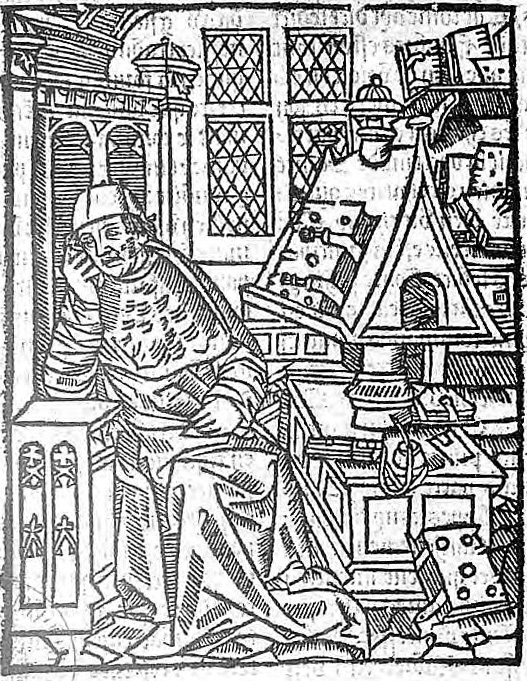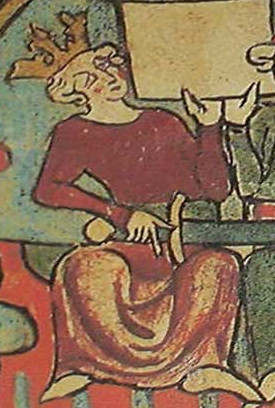|
Erex Saga
''Erex saga'' is an Old Norse-Icelandic prose translation of Chrétien de Troyes' Old French romance ''Erec et Enide''. It was likely written for the court of king Hákon Hákonarson of Norway, along with the adaptations of Chrétien de Troyes' ''Yvain'' (''Ívens saga'') and ''Perceval Percival (, also spelled Perceval, Parzival), alternatively called Peredur (), was one of King Arthur's legendary Knights of the Round Table. First mentioned by the French author Chrétien de Troyes in the tale ''Perceval, the Story of the ...'' (''Parcevals saga''). The saga is preserved completely only in 17th century manuscripts. References Chivalric sagas Adaptations of works by Chrétien de Troyes {{saga-stub ... [...More Info...] [...Related Items...] OR: [Wikipedia] [Google] [Baidu] |
Old Norse
Old Norse, Old Nordic, or Old Scandinavian, is a stage of development of North Germanic languages, North Germanic dialects before their final divergence into separate Nordic languages. Old Norse was spoken by inhabitants of Scandinavia and their Viking expansion, overseas settlements and chronologically coincides with the Viking Age, the Christianization of Scandinavia and the consolidation of Scandinavian kingdoms from about the 7th to the 15th centuries. The Proto-Norse language developed into Old Norse by the 8th century, and Old Norse began to develop into the modern North Germanic languages in the mid-to-late 14th century, ending the language phase known as Old Norse. These dates, however, are not absolute, since written Old Norse is found well into the 15th century. Old Norse was divided into three dialects: Old West Norse, ''Old West Norse'' or ''Old West Nordic'' (often referred to as ''Old Norse''), Old East Norse, ''Old East Norse'' or ''Old East Nordic'', and ''Ol ... [...More Info...] [...Related Items...] OR: [Wikipedia] [Google] [Baidu] |
Chrétien De Troyes
Chrétien de Troyes (Modern ; fro, Crestien de Troies ; 1160–1191) was a French poet and trouvère known for his writing on Arthurian subjects, and for first writing of Lancelot, Percival and the Holy Grail. Chrétien's works, including ''Erec and Enide'', ''Lancelot'', ''Perceval'' and ''Yvain'', represent some of the best-regarded of medieval literature. His use of structure, particularly in ''Yvain'', has been seen as a step towards the modern novel. Life Little is known of his life, but he seems to have been from Troyes or at least intimately connected with it. Between 1160 and 1172 he served (perhaps as herald-at-arms, as Gaston Paris speculated) at the court of his patroness Marie of France, Countess of Champagne, daughter of King Louis VII and Eleanor of Aquitaine, who married Count Henry I of Champagne in 1164. Later, he served the court of Philippe d'Alsace, Count of Flanders. Works Chrétien's works include five major poems in rhyming eight-syllable couplets. Fo ... [...More Info...] [...Related Items...] OR: [Wikipedia] [Google] [Baidu] |
Old French
Old French (, , ; Modern French: ) was the language spoken in most of the northern half of France from approximately the 8th to the 14th centuries. Rather than a unified language, Old French was a linkage of Romance dialects, mutually intelligible yet diverse, spoken in the northern half of France. These dialects came to be collectively known as the , contrasting with the in the south of France. The mid-14th century witnessed the emergence of Middle French, the language of the French Renaissance in the Île de France region; this dialect was a predecessor to Modern French. Other dialects of Old French evolved themselves into modern forms (Poitevin-Saintongeais, Gallo, Norman, Picard, Walloon, etc.), each with its own linguistic features and history. The region where Old French was spoken natively roughly extended to the northern half of the Kingdom of France and its vassals (including parts of the Angevin Empire, which during the 12th century remained under Anglo-Norman rul ... [...More Info...] [...Related Items...] OR: [Wikipedia] [Google] [Baidu] |
Erec And Enide
, original_title_lang = fro , translator = , written = c. 1170 , country = , language = Old French , subject = Arthurian legend , genre = Chivalric romance , form = , meter = Octosyllable , rhyme = Rhyming couplets , lines = 6,598 , oclc = , wikisource = Erec and Enide , orig_lang_code = fr , native_wikisource = Érec et Énide ''Erec and Enide'' (french: Érec et Énide) is the first of Chrétien de Troyes' five romance poems, completed around 1170. It is one of three completed works by the author. ''Erec and Enide'' tells the story of the marriage of the titular characters, as well as the journey they go on to restore Erec's reputation as a knight after he remains inactive for too long. Consisting of about 7000 lines of Old French, the poem is one of the earliest known Arthurian romances in any language, predated only b ... [...More Info...] [...Related Items...] OR: [Wikipedia] [Google] [Baidu] |
Haakon IV Of Norway
Haakon IV Haakonsson ( – 16 December 1263; Old Norse: ''Hákon Hákonarson'' ; Norwegian: ''Håkon Håkonsson''), sometimes called Haakon the Old in contrast to his namesake son, was King of Norway from 1217 to 1263. His reign lasted for 46 years, longer than any Norwegian king since Harald Fairhair. Haakon was born into the troubled civil war era in Norway, but his reign eventually managed to put an end to the internal conflicts. At the start of his reign, during his minority, Earl Skule Bårdsson served as regent. As a king of the birkebeiner faction, Haakon defeated the uprising of the final bagler royal pretender, Sigurd Ribbung, in 1227. He put a definitive end to the civil war era when he had Skule Bårdsson killed in 1240, a year after he had himself proclaimed king in opposition to Haakon. Haakon thereafter formally appointed his own son as his co-regent. Under Haakon's rule, medieval Norway is considered to have reached its zenith or golden age. His reputation and for ... [...More Info...] [...Related Items...] OR: [Wikipedia] [Google] [Baidu] |
Norway
Norway, officially the Kingdom of Norway, is a Nordic country in Northern Europe, the mainland territory of which comprises the western and northernmost portion of the Scandinavian Peninsula. The remote Arctic island of Jan Mayen and the archipelago of Svalbard also form part of Norway. Bouvet Island, located in the Subantarctic, is a dependency of Norway; it also lays claims to the Antarctic territories of Peter I Island and Queen Maud Land. The capital and largest city in Norway is Oslo. Norway has a total area of and had a population of 5,425,270 in January 2022. The country shares a long eastern border with Sweden at a length of . It is bordered by Finland and Russia to the northeast and the Skagerrak strait to the south, on the other side of which are Denmark and the United Kingdom. Norway has an extensive coastline, facing the North Atlantic Ocean and the Barents Sea. The maritime influence dominates Norway's climate, with mild lowland temperatures on the se ... [...More Info...] [...Related Items...] OR: [Wikipedia] [Google] [Baidu] |
Yvain, The Knight Of The Lion
, original_title_lang = fro , translator = , written = between 1178 and 1181 , country = , language = Old French , subject = Arthurian legend , genre = Chivalric romance , form = , meter = Octosyllable , rhyme = Rhyming couplets , lines = 6,818 , oclc = , wikisource = Yvain, the Knight of the Lion , orig_lang_code = fr , native_wikisource = Yvain ou le Chevalier au Lion ''Yvain, the Knight of the Lion'' (french: Yvain ou le Chevalier au Lion) is an Arthurian romance by French poet Chrétien de Troyes. It was written c. 1180 simultaneously with ''Lancelot, the Knight of the Cart'', and includes several references to the narrative of that poem. It is a story of knight-errantry, in which the protagonist Yvain is first rejected by his lady for breaking a very important promise, and subsequently performs a number of heroic d ... [...More Info...] [...Related Items...] OR: [Wikipedia] [Google] [Baidu] |
Perceval, The Story Of The Grail
, original_title_lang = fro , translator = , written = between 1182 and 1190 , country = , language = Old French , subject = Arthurian legend , genre = Chivalric romance , form = , meter = Octosyllable , rhyme = Rhyming couplets , lines = 9,000 , oclc = , wikisource = , orig_lang_code = fr , native_wikisource = Perceval ou le conte du Graal ''Perceval, the Story of the Grail'' (french: Perceval ou le Conte du Graal) is the unfinished fifth verse romance by Chrétien de Troyes, written by him in Old French in the late 12th century. Later authors added 54,000 more lines in what are known collectively as the Four Continuations,Grigsby, John L. (1991). "Continuations of ''Perceval''". In Norris J. Lacy, ''The New Arthurian Encyclopedia'', pp. 99–100. New York: Garland. . as well as other related texts. ''Perceval'' is the ... [...More Info...] [...Related Items...] OR: [Wikipedia] [Google] [Baidu] |
Chivalric Sagas
The ''riddarasögur'' (literally 'sagas of knights', also known in English as 'chivalric sagas', 'romance-sagas', 'knights' sagas', 'sagas of chivalry') are Norse prose sagas of the romance genre. Starting in the thirteenth century with Norse translations of French '' chansons de geste'' and Latin romances and histories, the genre expanded in Iceland to indigenous creations in a similar style. While the ''riddarasögur'' were widely read in Iceland for many centuries they have traditionally been regarded as popular literature inferior in artistic quality to the Icelanders' sagas and other indigenous genres. Receiving little attention from scholars of Old Norse literature, many remain untranslated. The production of chivalric sagas in Scandinavia was focused on Norway in the thirteenth century and then Iceland in the fourteenth. Vernacular Danish and Swedish romances came to prominence rather later and were generally in verse; the most famous of these are the Eufemiavisorna, them ... [...More Info...] [...Related Items...] OR: [Wikipedia] [Google] [Baidu] |


_Geraint.jpg)

_Owain.jpg)
.jpg)
